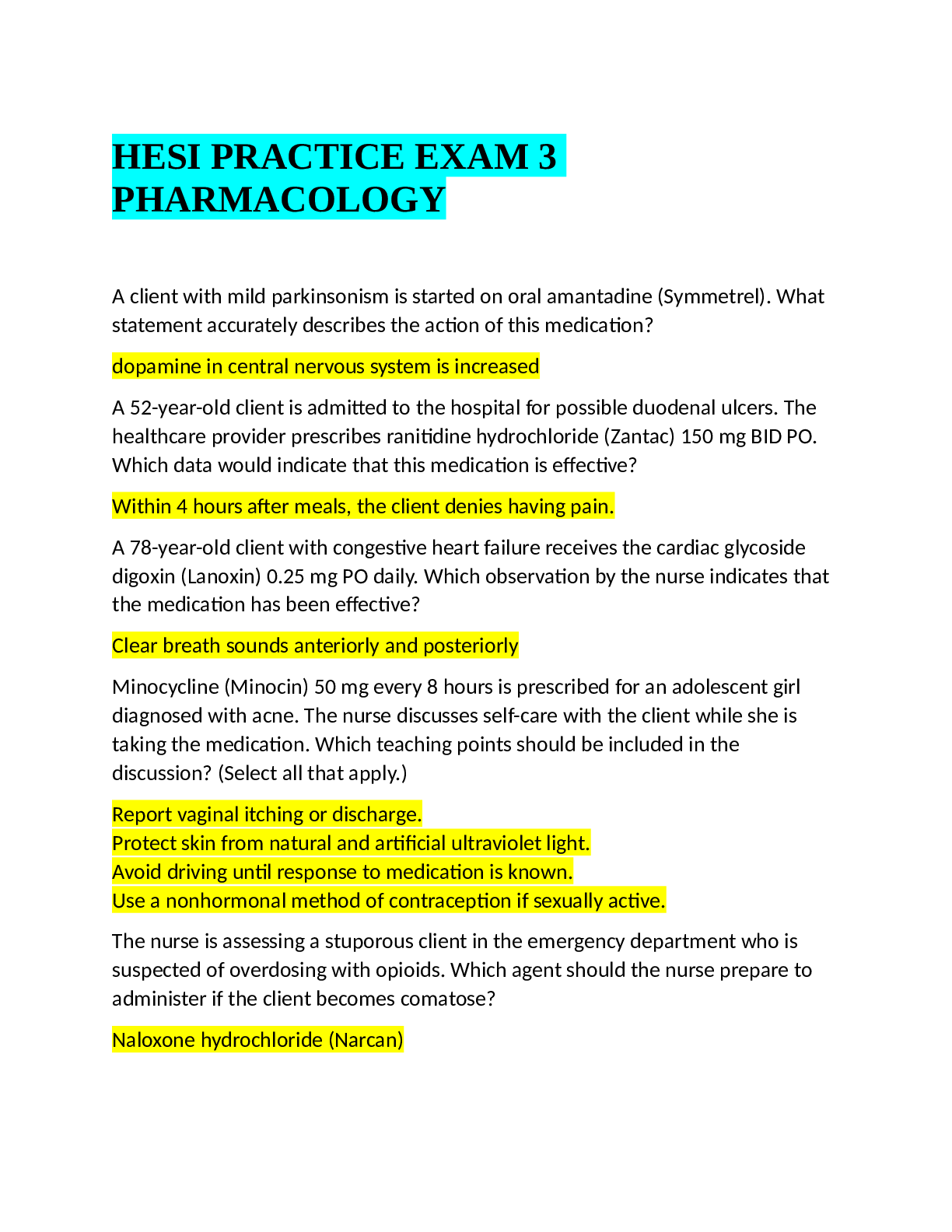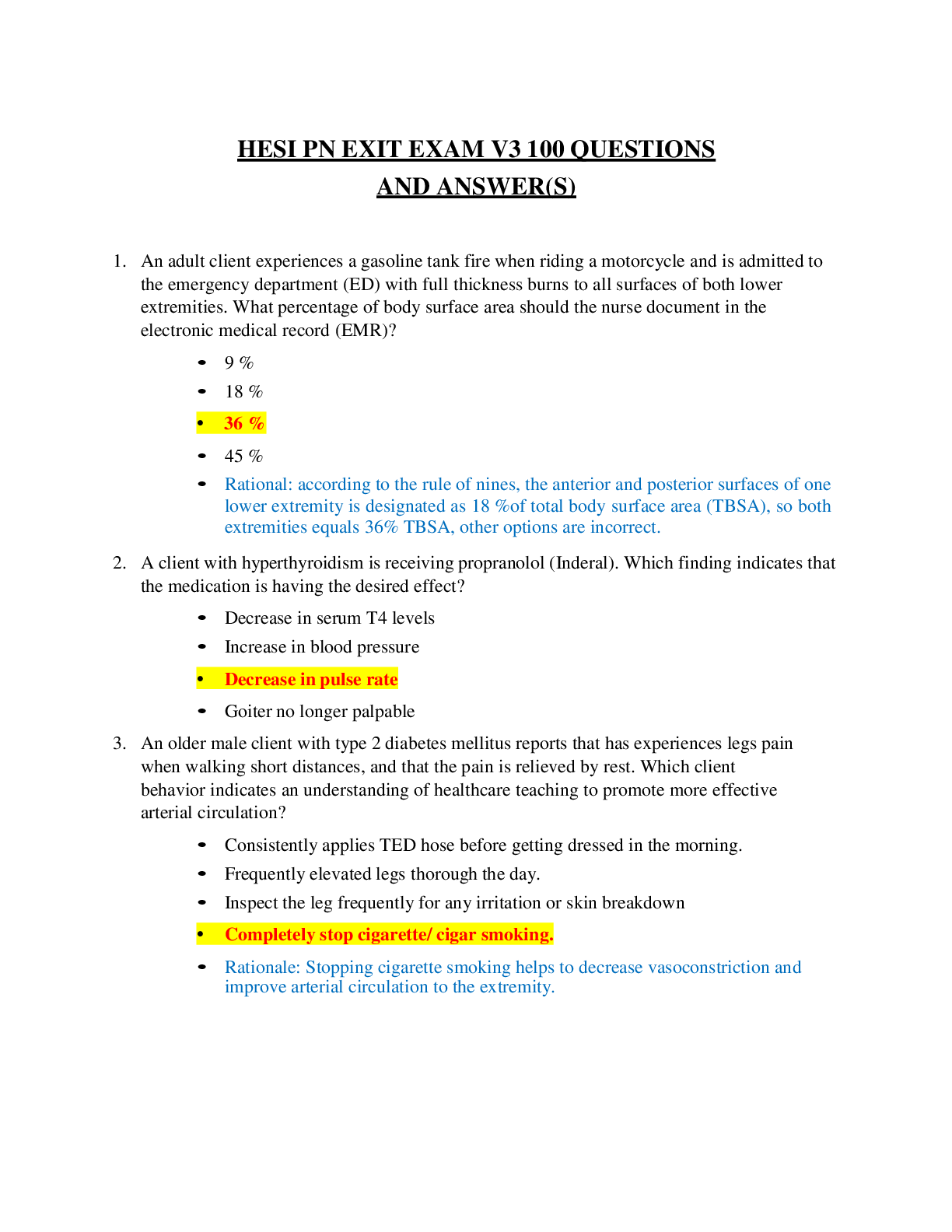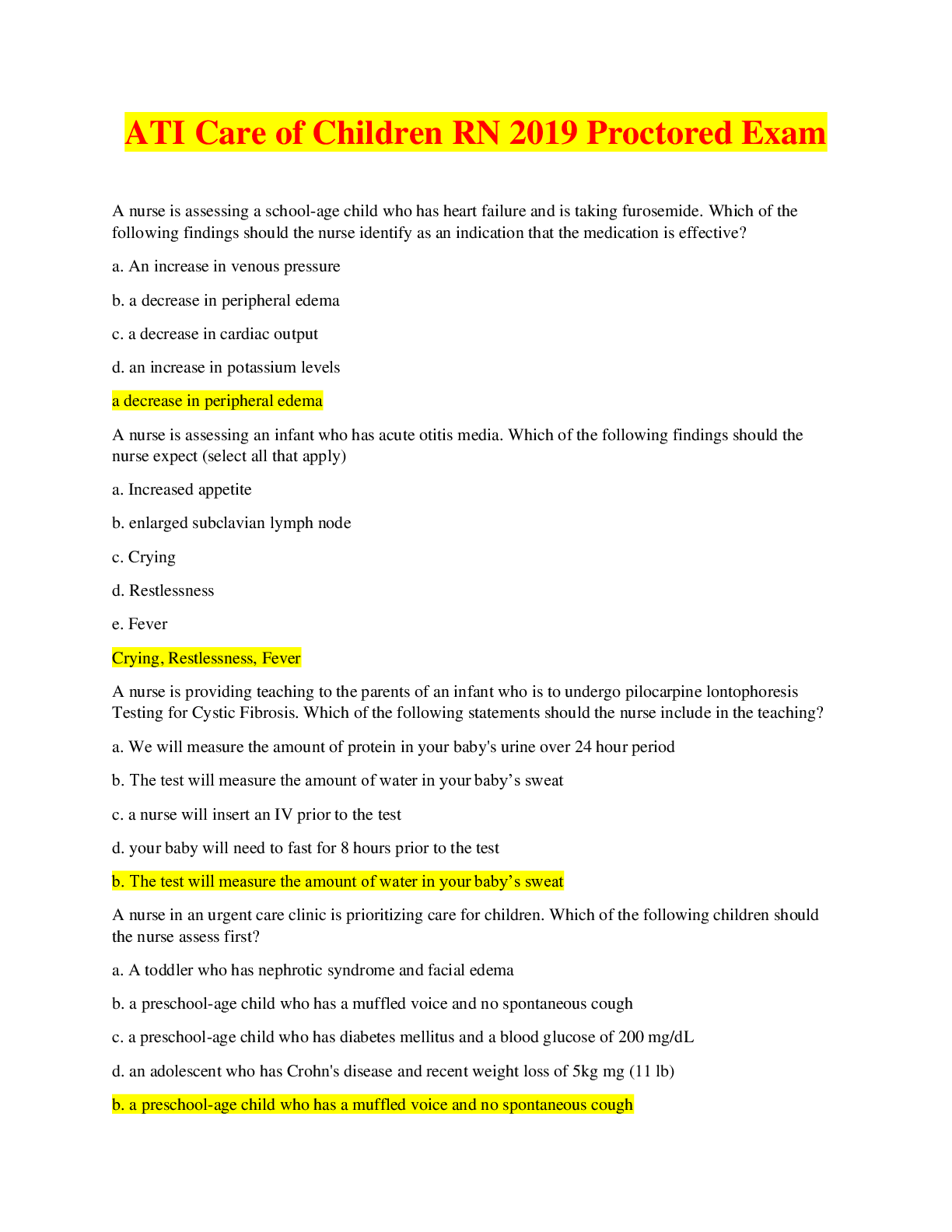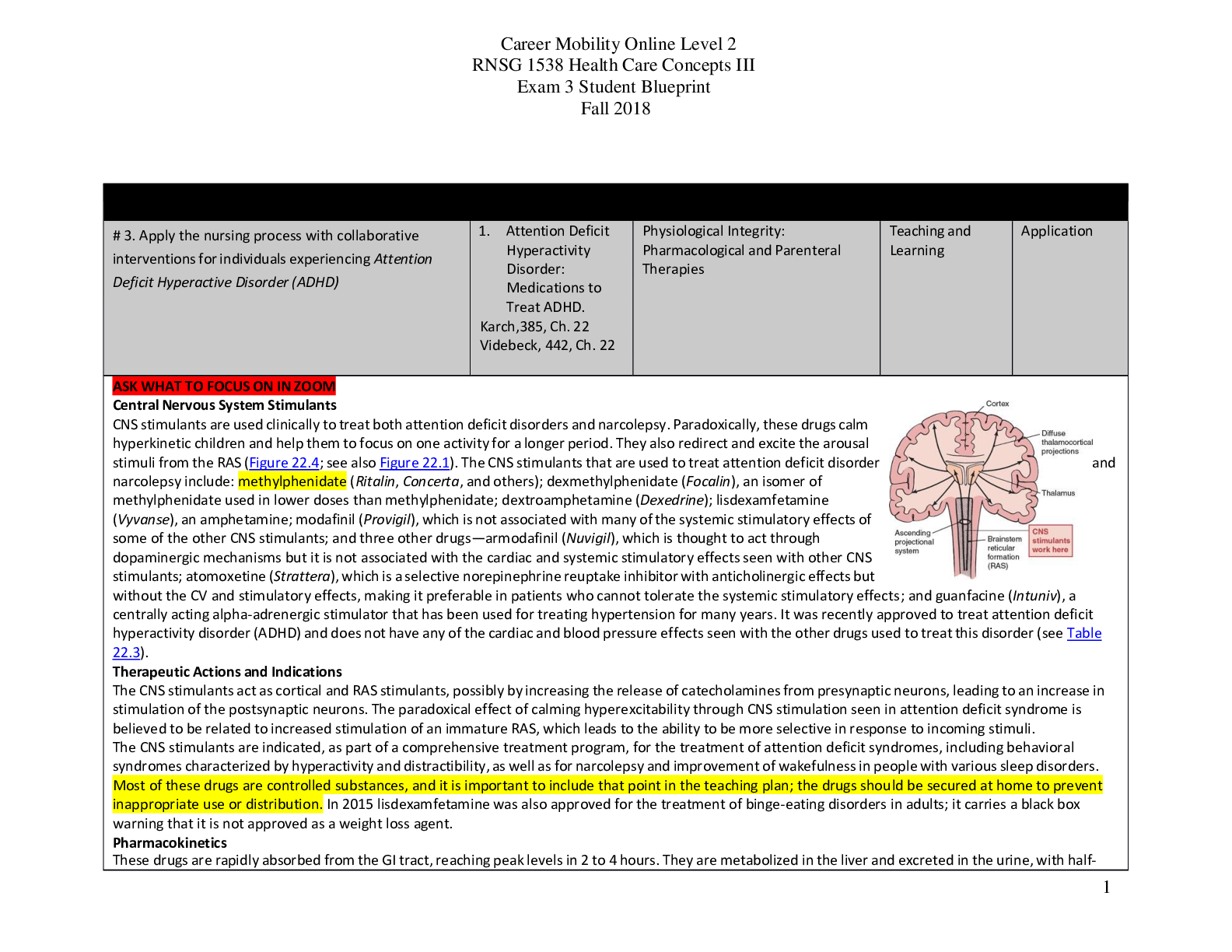RNSG 1538 Health Care Concepts III Final Exam BP
Document Content and Description Below
ASK WHAT TO FOCUS ON IN ZOOM Central Nervous System Stimulants CNS stimulants are used clinically to treat both attention deficit disorders and narcolepsy. Paradoxically, these drugs calm hyperkinet... ic children and help them to focus on one activity for a longer period. They also redirect and excite the arousal stimuli from the RAS (Figure 22.4; see also Figure 22.1). The CNS stimulants that are used to treat attention deficit disorder and narcolepsy include: methylphenidate (Ritalin, Concerta, and others); dexmethylphenidate (Focalin), an isomer of methylphenidate used in lower doses than methylphenidate; dextroamphetamine (Dexedrine); lisdexamfetamine (Vyvanse), an amphetamine; modafinil (Provigil), which is not associated with many of the systemic stimulatory effects of some of the other CNS stimulants; and three other drugs—armodafinil (Nuvigil), which is thought to act through dopaminergic mechanisms but it is not associated with the cardiac and systemic stimulatory effects seen with other CNS stimulants; atomoxetine (Strattera), which is a selective norepinephrine reuptake inhibitor with anticholinergic effects but without the CV and stimulatory effects, making it preferable in patients who cannot tolerate the systemic stimulatory effects; and guanfacine (Intuniv), a centrally acting alpha-adrenergic stimulator that has been used for treating hypertension for many years. It was recently approved to treat attention deficit hyperactivity disorder (ADHD) and does not have any of the cardiac and blood pressure effects seen with the other drugs used to treat this disorder (see Table 22.3). Therapeutic Actions and Indications The CNS stimulants act as cortical and RAS stimulants, possibly by increasing the release of catecholamines from presynaptic neurons, leading to an increase in stimulation of the postsynaptic neurons. The paradoxical effect of calming hyperexcitability through CNS stimulation seen in attention deficit syndrome is believed to be related to increased stimulation of an immature RAS, which leads to the ability to be more selective in response to incoming stimuli. The CNS stimulants are indicated, as part of a comprehensive treatment program, for the treatment of attention deficit syndromes, including behavioral syndromes characterized by hyperactivity and distractibility, as well as for narcolepsy and improvement of wakefulness in people with various sleep disorders. Most of these drugs are controlled substances, and it is important to include that point in the teaching plan; the drugs should be secured at home to prevent inappropriate use or distribution. In 2015 lisdexamfetamine was also approved for the treatment of binge-eating disorders in adults; it carries a black box warning that it is not approved as a weight loss agent. Pharmacokinetics These drugs are rapidly absorbed from the GI tract, reaching peak levels in 2 to 4 hours. They are metabolized in the liver and excreted in the urine, with half- [Show More]
Last updated: 2 years ago
Preview 1 out of 111 pages
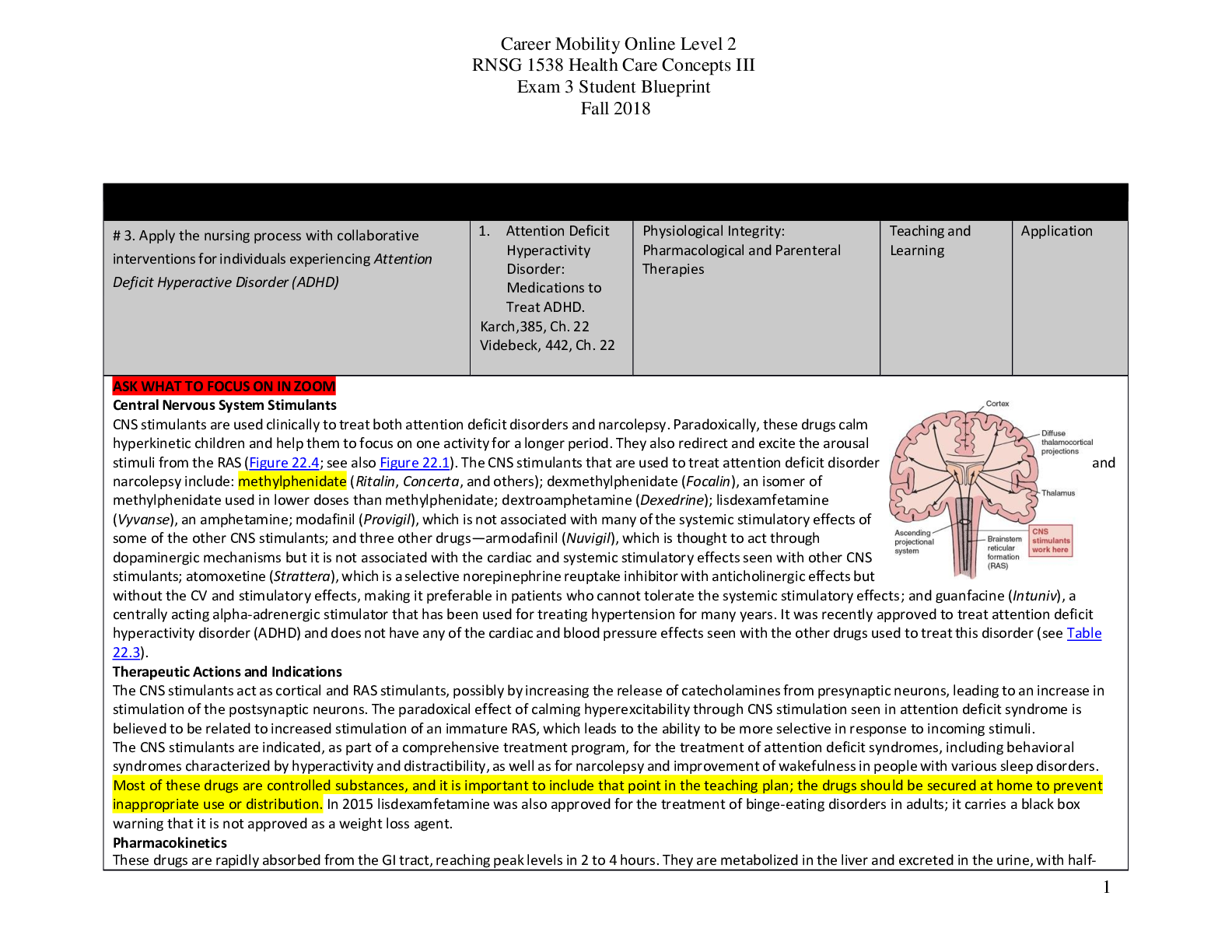
Buy this document to get the full access instantly
Instant Download Access after purchase
Buy NowInstant download
We Accept:

Reviews( 0 )
$22.00
Can't find what you want? Try our AI powered Search
Document information
Connected school, study & course
About the document
Uploaded On
Nov 05, 2021
Number of pages
111
Written in
Additional information
This document has been written for:
Uploaded
Nov 05, 2021
Downloads
0
Views
124




.png)
